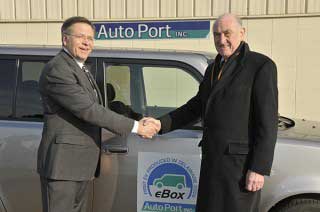Under the terms of the licensing agreement, AutoPort has been granted non-exclusive rights of the technology in commercial fleet vehicles.
The V2G technology enables electric-car owners to plug in their vehicles and send electricity back to electrical utilities. The system is designed to generate cash for the driver, while strengthening the US’s power supply and reducing dependence on fossil fuels.
During the next year, AutoPort plans to retrofit the first 100 V2G cars as a proof-of-concept demonstration of the technology, which was developed by Willett Kempton, a professor in UD’s College of Earth, Ocean and Environment, and UD research fellow Jasna Tomic.
If the initial tests of the technology are successful and V2G vehicles are subsequently manufactured, the university will receive a royalty for each vehicle sold with V2G equipment.
‘AutoPort is excited to be the first company in the world licensed to practise this V2G technology,’ said Dick Johnson, the company’s director of business development. ‘We are looking forward to working closer with the university and AC Propulsion to demonstrate the first large-scale V2G project.’
AC Propulsion, based in San Dimas, California, makes the electric drive system and designed the eBox, an all-electric car. The company has added V2G features as a result of working with UD researchers.
Johnson said that AutoPort will work with major companies in the area to demonstrate the V2G concept. At least 60 vehicles are needed to produce 1MW of power when the vehicles are plugged in to the grid.
The company is currently completing four vehicles for the State of Delaware and expects to have the first 100 vehicles produced in the next 12-18 months, he added.
Although the first vehicles converted have been Toyota Scions, Johnson said that other car models are being considered and the company is approaching some of its large-fleet customers about converting its three- to five-year-old Chevrolet vans.
In September 2009, Delaware governor Jack Markell signed Senate Bill 153, which rewards owners of V2G technology for plugging into the grid, compensating them for electricity sent back to the grid at the same rate they pay for electricity to charge their car battery.
A bill introduced in US Congress in December 2009 would provide funding to the Department of Energy and the US Postal Service to convert existing mail trucks and to manufacture new ones to use the UD-developed V2G technology.






Report highlights significant impact of manufacturing on UK economy
I am not convinced that the High Value Manufacturing Centres do anything to improve the manufacturing processes - more to help produce products (using...